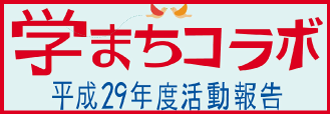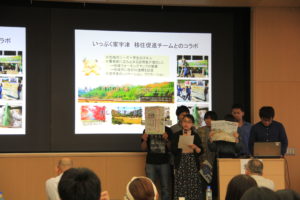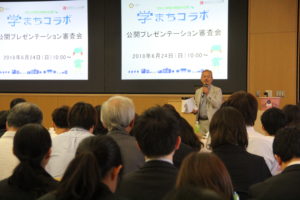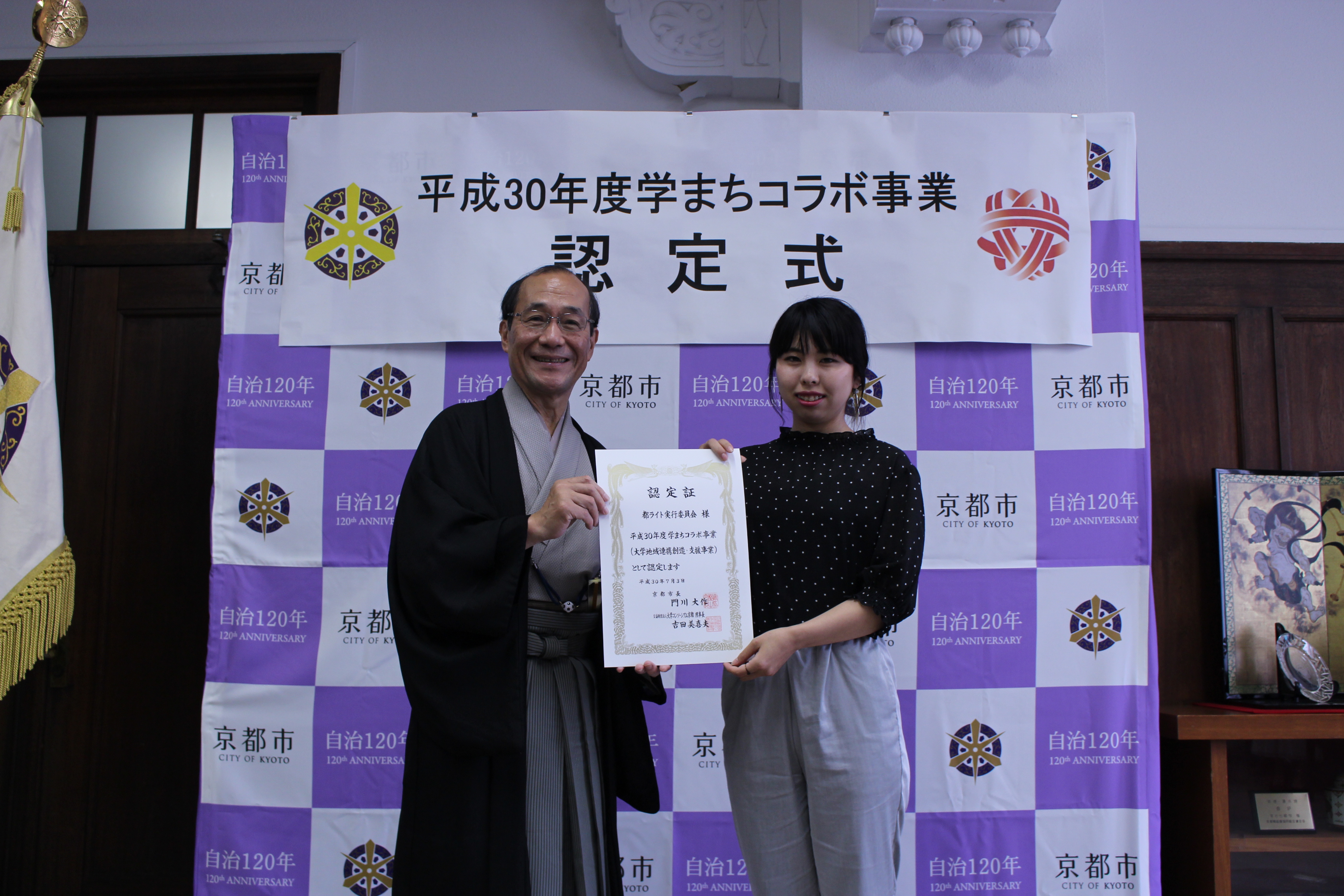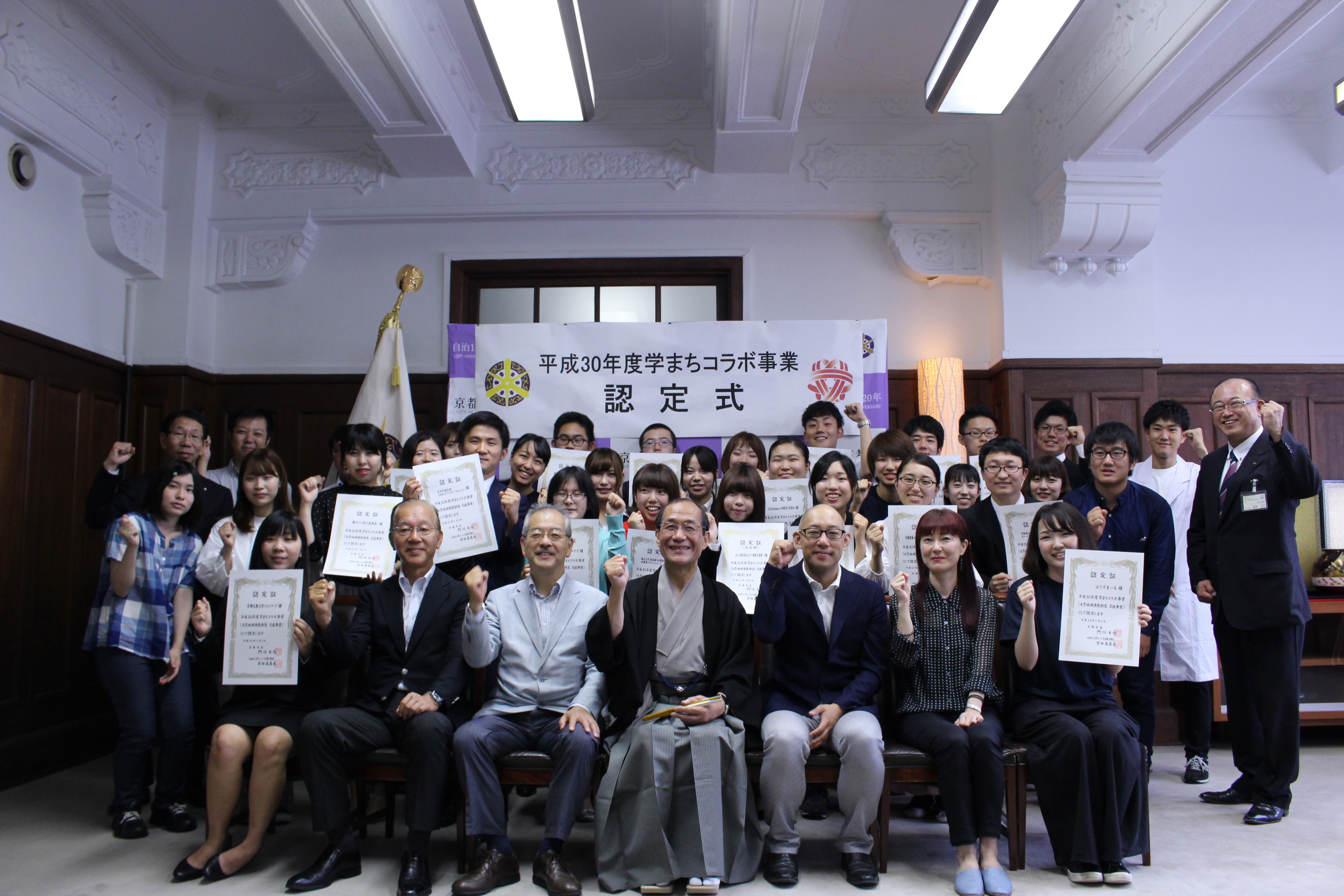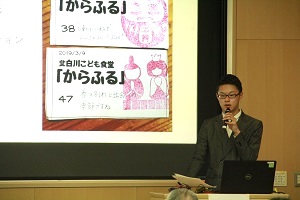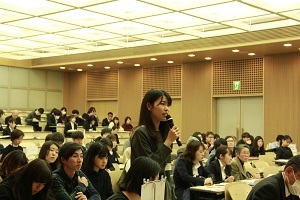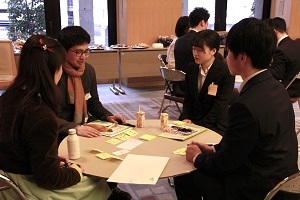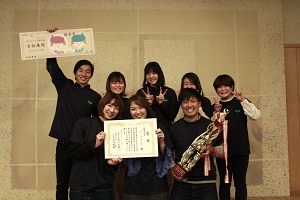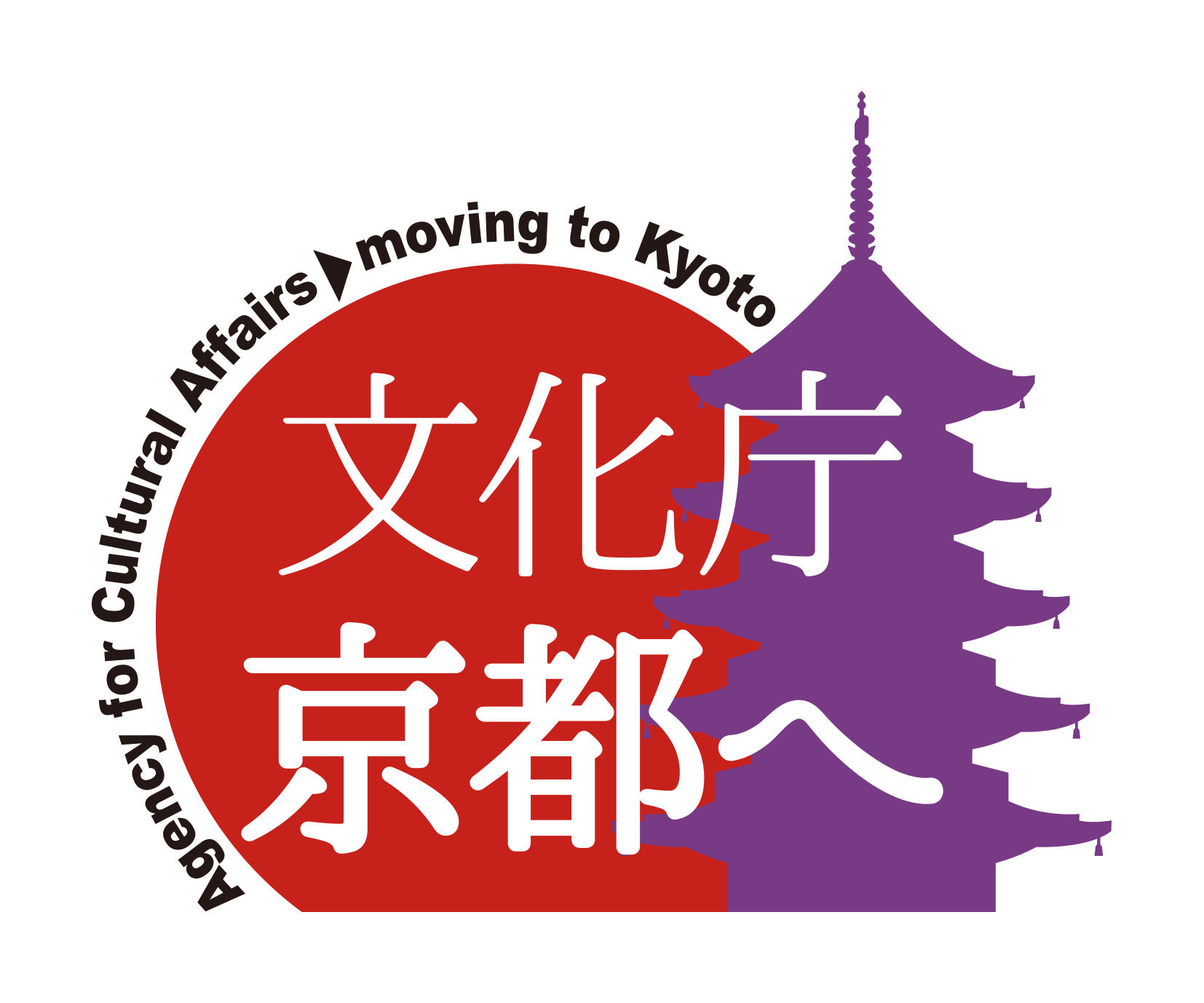- Business Overview
- Target Businesses
- Target Organizations
- Amount and number of donations
- About the application
- Main Schedule for the Future
- Selection Results
- Implementation Report
- Learning Town NEWS!
- Inquiries
Business Overview
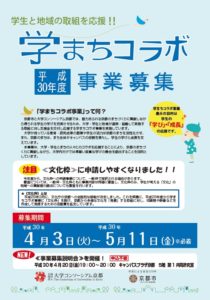
Kyoto City and the University Consortium Kyoto are implementing the “University Regional Collaboration Creation and Support Project (nicknamed the Gakumachi Collaboration Project)” to support the efforts by granting support funds to projects and projects that work on urban development and regional revitalization in Kyoto through “collaboration” between universities, students, and local communities.
This year marks the 15th year of the program, with the aim of developing human resources by securing practical education and research opportunities for universities, and for local communities, solving local issues and revitalizing them through the knowledge of the university and the vitality of students.
|
NEW It has become easier to apply for the ≪ Cultural Framework≫ From this fiscal year, projects that apply for the cultural category may be selected in the general category. As for the judging, the content of the projects will be judged in the same way for both the general and cultural categories, and only the cultural category will be judged from the perspective of the student’s degree of contribution to the local community.
|
Target Businesses
For the purpose of solving local issues and revitalizing the city of Kyoto, projects that fall under the following requirements ((1) and (2) for the general category and (1), (2), and (3) for the cultural framework) to be implemented in Kyoto City during the Heisei 30 fiscal year (from the date of adoption to the end of March of the following year) are eligible.
However, political activities, religious activities, activities that promote specific ideas, violent or destructive activities, commercial businesses, etc. are excluded.
* Projects applied for the cultural category may be selected in the general category.
* Projects applied for the general category will not be selected for the cultural category.
[Common requirements for general and cultural frameworks]
(1) Projects in which universities and student groups and local communities (residents’ organizations, civic activity groups, businesses, etc., mainly in the Kyoto City area) collaborate and collaborate as organizations and groups, and in particular, students take the initiative in their activities.
* Administrative agencies may be included as collaborators, but cooperation with administrative agencies alone is not possible.
Examples: Health and welfare, social education, community development, promotion of academic, cultural, artistic or sports, environmental conservation,
Surveys and research in various fields such as community safety, citizen lectures, events, etc.
(2) Those who have not received any subsidies or subsidies from Kyoto City other than the Gakumachi Collaboration Project.
[Requirements for the cultural quota only]
(3) Priority Theme: “Culture of the Region”
In addition to the requirements of (1) and (2), it is necessary to dig up the culture that lies dormant in the region and to pass on the culture that has been passed down from generation to generation in the region.
Projects that work on dissemination to preserve for the future, or to create a new culture through the knowledge of the university and the vitality of its students.
Businesses to work on.
In order to inherit and archive local culture, it is necessary to disseminate the results of activities in print and video.
* “Culture” includes lifestyles and customs such as art, performing arts, events, industry, food, clothing, housing, etc., as well as old and new.
There are diverse aspects.
Universities, student groups, and the local community themselves should carry out activities from the perspective of “this is culture.”
Target Organizations
Organizations and groups of University Consortium, Kyoto member universities and junior colleges (*1)
or
A local organization that mainly works in the Kyoto city area (*2)
(*1) University departments, laboratories, seminars, clubs, student circles
〈Circles made up of students from multiple universities are also possible〉, etc.
*2 Residents’ organizations such as residents’ associations and neighborhood associations, civic activity groups, groups and groups consisting of businesses, etc. (shopping streets, etc.)
![]() Kyoto City Collaborative Project
Kyoto City Collaborative Project
Amount and number of donations
General category: Up to 300,000 yen / about 15 cases
Cultural quota: Up to 450,000 yen / about 2 projects
* However, if you apply for the cultural quota, you will be required to use the support money to create deliverables such as printed materials and videos so that it will lead to the inheritance and dissemination of culture.
* In addition, at the project report meeting scheduled to be held in March 31, the implementing organization (1 organization) that is recognized as the most excellent will be commended (certificates, trophies, and activity incentives of 100,000 yen will be issued separately).
About the application
Application period [Recruitment for Heisei 30 has ended]
Tuesday, April 3, 2018 ~ Friday, May 11, 2018
* If you send it by mail, it must arrive on the same day, and if you bring it by 5 p.m.
How to apply: Step 1 Before you start writing your application < finish>
It is recommended to read the master plan of the administrative district in which the activity will be carried out. In addition, please listen to the opinions of local people and related government agencies as much as possible regarding the background of the project implementation and the needs of the community. If you have any questions about the basic plan of the ward or points to keep in mind when working in the community, you can also consult with the Regional Power Promotion Office of each ward office or branch. In addition to reconfirming and sharing your objectives and goals, let’s discuss and think again about whether the business you are thinking about is the best way to achieve your goals. In addition, with regard to continuing projects, let’s thoroughly summarize the efforts we have made so far.
How to apply: Step 2 Let’s write an application!< Finished>
● Application Guidelines (PDF link)
● Application form (Word link)
● Application form (example)
|
Points to fill in |
○ Let’s check the judging criteria! In particular, the first screening is all about the submitted documents. Let’s find out what criteria are used to judge the case. ○ What is the purpose of the project? Write down your purpose and local needs. The group that listened to the opinions of local people and ward offices in step 1 should also write the contents. ○ Who are you collaborating with? What does each of them do? Let’s be specific. The Gakumachi Collaboration emphasizes learning that can be obtained by collaborating with the university, students, and the community toward the same goal. If a student group is applying, write down what role the partner will play, and if a local organization is applying, write down what the student will do independently. |
How to apply: Step 3 Register your business outline
Please register your business outline using the form below.
How to apply: Step 4 Submission of application documents
Please submit it by mail or bring it to the following address within the application period.
(1) 10 copies of application documents * If there are reference materials (up to 10 sheets), submit 10 copies of reference materials
(2) Application document data (MS-Word) * If reference materials are available, submit the reference data as well.
* Please do not change the prescribed form downloaded from the University Consortium Kyoto website for both (1) and (2).
Main Schedule for the Future
1st screening: After the application deadline ~ mid-June *Document screening
Second screening: June 24, 30 (Sunday) * Public presentation screening
Notification of support project decision and selection results: Early July 30
Approval formula: Early ~ mid-July 30 * A certificate will be issued by Kyoto City for the selected project.
Interim report: Mid ~ end of October 30 * Submission of documents
Final report: March 31 * Submission of documents
Announcement: Mid ~ end of March 31
Selection Results
First Screening (Document Screening)
Organizations that passed the first selection round: 3 projects in the cultural category, 21 projects in the general category
Second Selection (Public Presentation Judging)
On June 24, 2018, the second selection meeting (public presentation judging meeting) was held, and 2 projects in the cultural category and 17 projects in the general category were certified as support projects as follows.
(Cultural Framework)
| Project Name |
Name of Organization【Name of Affiliated University】 Outline of the Administrative Region |
Project |
|---|---|---|
| Soikal from Shizuhara ~Dissemination of Kyoto Soybean Food Culture~ | Mirai Transmission Station Omusubi Shizuhara Support Team [Kyoto Sangyo University] Administrative District: Sakyo Ward: Sakyo WardWith |
aim of local production for local consumption of soybeans for local consumption and the transmission of food culture, which are indispensable raw materials for Kyoto cuisine and symbolize Kyoto’s food culture, we will cultivate Kyoto soybeans “Otsuru”, hold events related to soybeans, and develop products in cooperation with the Shizuhara area. |
| Fukakusa Machiya Cinema ~School District and Memory~ | Fukakusa Machiya Cinema (Fushimi and Fukukusa Community Archive Project) 【Ryukoku University】 Administrative District: Fushimi Ward |
In order to preserve for future generations the images and photographs of the Showa period of Fushimi Ward that lie dormant in the community, and to provide opportunities for elderly people living alone, who tend to be isolated, to go out, we will excavate an 8mm film, screen it at a viewing party (held about three times a year) in which anyone in the community can participate, and make it into a DVD for preservation as a record of the community. In addition, in addition to collecting photographs from the Showa period and holding events to show them at the screening, we will interview the owners of the videos and local residents to create a booklet that disseminates the “memories” and “stories” behind the images. |
(General category)
| Project Name |
Name of Organization【Name of Affiliated University】 Outline of the Administrative Region |
Project |
|---|---|---|
| Environmental Protection of Fushimi Fukakusa and Higashitakase River and Jizo Bon Project | Ryukoku University, Higashitakase River Environmental Protection and Jizo Bon Project Team 【Ryukoku University Junior College】 Activity Administrative District: |
In order to pass on the traditional events of the Fushimi Ward area to the next generation and to improve the environment of the Higashitakase River, which will be the venue, we will plan and operate river cleanup activities and the “Jizo Bon Program” with the involvement of high school students and others in cooperation with the local community. |
| Daigo Nakayama Housing Complex Revitalization Project | Kyoto Tachibana University Society for Contemporary Business Studies [Kyoto Tachibana University] Administrative Districts: Yamashina Ward, Fushimi WardIn |
to promote Shimizu ware, which is a traditional craft in Kyoto, and to increase the number of places for interaction between the elderly and the child-rearing generation at the Daigo Nakayama Housing Complex in Fushimi Ward, we held a lighting event “Pottery Lantern Road” using Shimizu pottery, as well as a workshop on cleaning up the venue and making accessories using Shimizu ware to be exhibited at events. Create a place for friendship among residents. |
| Children’s Science Classroom | Exciting Laboratory [Bukkyo University] Administrative District: |
Kitano shopping street area of Kamigyo-ku, Kamigyo-ku, free science experiment classes for children will be held during the after-school hours on weekdays to create a place for children to belong, and to create opportunities for children and their parents to visit the shopping street. In addition, in addition to participating in the “Kitano Town Development Council” and striving to understand the needs of the shopping street, we will also exhibit a booth at events sponsored by Kitano Shopping Street, such as summer festivals and Halloween. |
| Halloween in Saiin | Halloween in Western House Executive Committee [Kyoto University of Foreign Studies] Administrative District: |
aim of strengthening ties with local residents, shops, and students around Shijo-dori in Ukyo Ward, a Halloween parade will be held from Kyoto University of Foreign Studies to Hankyu Saiin Station, in which students and local people can participate, and related events include a stamp rally around the surrounding area and workshops at a children’s center. Carry out collaborative projects with the Yoin Halloween Festival. |
| Keihoku Satomachi Festival | Satomachi Festival Executive Committee [Kyoto Sangyo University, Ryukoku University] Administrative District: In |
order to create a place for interaction between Ukyo Ward (Keihoku) and the town (in the city) and to revitalize the region, students and working people from the Keihoku area will play a central role in holding a summer festival and Christmas party in the area. In the summer festival, which will be held for the third year, in collaboration with local Kitakuwata high school students, there will be workshops on making somen noodles and lanterns, and at the “Christmas Party” held for the first time under the theme of “Adults can also enjoy it,” sweets will be made using local ingredients. |
| Camo Cinema 14 | Camo Cinema 14 Executive Committee [Ritsumeikan University] Administrative District: In |
order to raise the awareness of young people about environmental conservation in the Kamo River, cleanup activities will be held during the day and outdoor movie screenings will be held after sunset in the Kamo River. This year, we will deepen our efforts with the following three objectives: “to make young people aware of environmental conservation by making the most of the local characteristics unique to the student town,” “to establish the event itself in the community as a ‘summer tradition’ that local residents can enjoy every year,” and “to make local residents aware of its significance as a student activity in Kyoto.” |
| Kitashirakawa Children’s Cafeteria “Karafuru” | Sieve from the student body [Kyoto University, Doshisha University, Doshisha Women’s University] Activity Administrative District: |
aim of laying the groundwork for the entire community to raise and watch over children in the entire region by promoting the creation of a community that will serve as a base for interaction among local residents of Sakyo Ward, we will open a children’s cafeteria “Karafuru” once a month at the Kitashirakawa Children’s Center, in which anyone can participate. |
| Circle-like self-government activities in the Rakusai Bamboo Village Housing Complex | Kyoto Women’s University, Eriko Inoue Laboratory, Takenosato Group [Kyoto Women’s University] Administrative District: In |
Rakusai Bamboo Village Housing Complex, where the local community is weak and there are no autonomous organizations such as neighborhood associations, based on the need for “human relationships that can help each other in the event of a disaster,” we will create circle activities triggered by residents’ specialties and hobbies, and work to solve local issues by linking these circles. |
| Miyako Light ’18 | Miyako Light Executive Committee [Kyoto Institute of Technology, Kyoto Prefectural University, Doshisha University, Doshisha Women’s University, Ritsumeikan University, Kansai Gaidai University] Activity Administrative District: In |
order to let many people know the charm of machiya so that it will be an opportunity to preserve townhouses in Kamigyo Ward, we will hold events to light-up machiyas, and this year, as a new element, we will use kimonos that are not used in the area and plan a tour in which local people will serve as guides. |
| Soratane Project | Soratane Project [Kyoto Sangyo University, Otani University] Activity Administrative District: |
concept of connecting “children”, “students”, and “communities” in Kita-ku, with the aim of attracting the younger generation to the Shin-Omiya shopping street in Kita-ku, we will hold a student-led music stage, a stall booth serving local ingredients, and a “Soratane Festival” that holds workshops for children, and enhance publicity as a year-round activity. |
| Kaohsiung Revitalization Project | Bukkyo University Kyoto-Kaohsiung Revitalization Project [Bukkyo University] Administrative District: Ukyo WardWith |
the aim of revitalizing the Kaohsiung area, a famous place for autumn leaves where the number of tourists is decreasing, and increasing the number of tourists throughout the year, we will disseminate the charm of the city on SNS, hold photo exhibitions, produce goods for the Kaohsiung mascot character, and clean up the Kiyotaki River. |
| Keihoku Utsu Fureai Learning Mutual | Kyoto Seika University Keihoku Utsu Treasure Hunt [Kyoto Seika University] Administrative District: Ukyo WardWith |
the aim of revitalizing the Utsu area, which is blessed with abundant nature, history, and culture, but is aging and depopulated, we will hold exchange events such as children’s photography classes and children’s festivals, participate in traditional events such as summer festivals, organize materials from the former Uzu Elementary School, and plan the renovation of vacant houses. |
| Collaborative project to restore the connection of housing complexes “Taoling HANDs” | Usumaru 【Ryukoku University】 Administrative District: |
Focusing on the problem of the decrease in the number of households, the increase in the number of elderly people living alone, and the problem of solitary deaths in the Momoryo Housing Complex in Fushimi-ku, Fushimi-ku, the event “Momoryo HANDs” centered on the four areas of café space, vegetable market, bazaar, and children’s booth will be held, and “Housing Complex Newsletter” will be published and distributed as a summary of event information at the housing complex. |
| Yodohoncho Shopping Street Fureai Library Project | Yodohoncho Shopping Street Fureai Library Project 【Ryukoku University】 Administrative District: |
the purpose of revitalizing Yodohoncho, Fushimi Ward, and revitalizing the community based on the shopping street, we will utilize vacant stores to discover and disseminate the attractiveness of shopping streets and regions centered on the library that is opened regularly, hold new product development workshops, and create free papers and flyers that convey the unique charm of shopping streets from the student’s perspective. |
| Kyoto Bunkyo University Bus Tours | Kyoto Bunkyo University Bus Tours [Kyoto Bunkyo University] Administrative District: Fushimi Ward |
In Mukojima New Town, where poverty and withdrawal of the elderly are becoming a problem due to the aging of the population, we will conduct a one-day bus tour using a school bus (to and from Mukojima New Town) with the aim of creating opportunities for elderly people to interact with each other and to relieve daily stress and find a sense of purpose in life. This year, in addition to making it possible for many residents, including elderly people who have returned from China, to participate, we will hold the “Kyoto Bunkyo Bus Tour Photo Exhibition” and the “Participant Gathering” to exhibit the activities so far. |
| KOKA☆Orange Project ~Let’s support “food” for the elderly and people with disabilities! ~ |
KOKA☆Orange Supporters 【Kyoto Koka Women’s University】 Administrative District: Ukyo Ward |
In order to contribute to the realization of a richer life for the elderly and people with disabilities in the community, we will develop new products of “soft Japanese sweets” that are easy to swallow. In addition, we will prepare pamphlets describing training methods for maintaining the ability to eat, and distribute them to facilities and other facilities to raise awareness of “eating deliciously and safely.” |
| Mirai Art Seika Project | Shikasu 【Kyoto Seika University】 Administrative District: Sakyo WardArt |
workshops will be held at local children’s centers, day service centers, etc., in order to create an opportunity for local residents of a wide range of generations, mainly children and the elderly, to interact with each other from the perspective of “art” and create a “sense of purpose in life” for children. |
Implementation Report
Heisei 30 Public Presentation Screening (Second Selection)
On Sunday, June 24, 2018, the second selection meeting (public presentation judging meeting) of the Heisei 30 Gakumachi Collaboration Project was held at Campus Plaza Kyoto. The 24 organizations that advanced to the second round of selection conveyed their enthusiasm for the content of their projects and how they would proceed with cooperation with the local community. In response to the students’ thoughts, the judges asked questions that were sometimes harsh, but with high expectations.
On the day of the event, a total of about 160 people, including representatives of the presentation organizations, attended.
Heisei 30 Business Certification Ceremony
On Tuesday, July 3, 2018, a ceremony was held at Kyoto City Hall to certify the Gakumachi Collaboration Project, and certificates were awarded to the 19 organizations selected this year. Representatives of each organization who received certificates from Mayor Kadokawa expressed their strong determination. A member of the selection committee said, “We hope that the activities will support you to deepen your own learning and for the local community to take the lead in your efforts.”
From now on, the activities of each organization will start in earnest. Please keep an eye out for the activities of each organization on the University Consortium Kyoto’s website “Gakumachi NEWS” and facebook!
Achievement debriefing session
≪ announcement≫
On Sunday, March 24, 2019, 19 organizations (17 organizations in the general category, 2 organizations in the cultural category) adopted in 2018 reported on their activities. In the 8 minutes allotted to each organization, they gave presentations on the results of their activities this year, and it was a debriefing session that showed how they have been actively involved in projects that are close to the community.
As a new initiative in 2018, we introduced a designated question system by the selected organizations, and questions were actively posed not only by the judges but also by the students. In addition, we introduced a comment sheet for the selected organizations to write their impressions and advice on each organization’s presentation, and we were able to deepen the exchange of opinions among students.
≪Opinion exchange meetings and exchange meetings≫
After the debriefing session, a discussion and exchange meeting were held as a place for students to reflect on what they had learned through their involvement in the Gakumachi Collaboration Project and to have a frank discussion under the guidance of the Kyoto City Community Development Advisor.
Approximately 70 participants, including not only representatives of the selected organizations but also members of the general public, were divided into groups of 4 or 5 using round cardboard as tables to review their activities, and exchanged opinions while changing group members on themes such as what they learned, specific episodes that led to learning, and what they would like to challenge and expect in the future through regional collaboration. In addition, in order to share what each group talked about, we were able to further deepen our interaction by writing down what impressed us on sticky notes and posting them on the board.
≪Award Ceremony and Commentary≫
Every fiscal year, we commend the business organizations that have achieved the most excellent results and present incentives for their activities. This year’s best organization was selected as “Hasumairu (Ryukoku University)” for its work on the “Collaborative Project to Restore the Connections of Housing Complexes”!
The award was given in recognition of their direct efforts to address local issues, their deep involvement with the local community, and their ability to connect the issues they discovered to results with their own ideas.
Learning Town NEWS!
We introduce the initiatives of the projects adopted in the Gakumachi Collaboration Project from time to time.
Inquiries
University Consortium Kyoto Gakumachi Collaboration Project
TEL :075-353-9130 FAX: 075-353-9101
MAIL:gakumachi-admin-ml■consortium.or.jp
(Please change ■ to @ and send)
〒600-8216 Shimogyo-ku, Kyoto-shi, Nishitoin-dori, Shiokoji, Shimo-ku, Kyoto, Campus Plaza Kyoto
* Reception hours: Tuesday ~ Saturday 9:00 ~ 17:00














